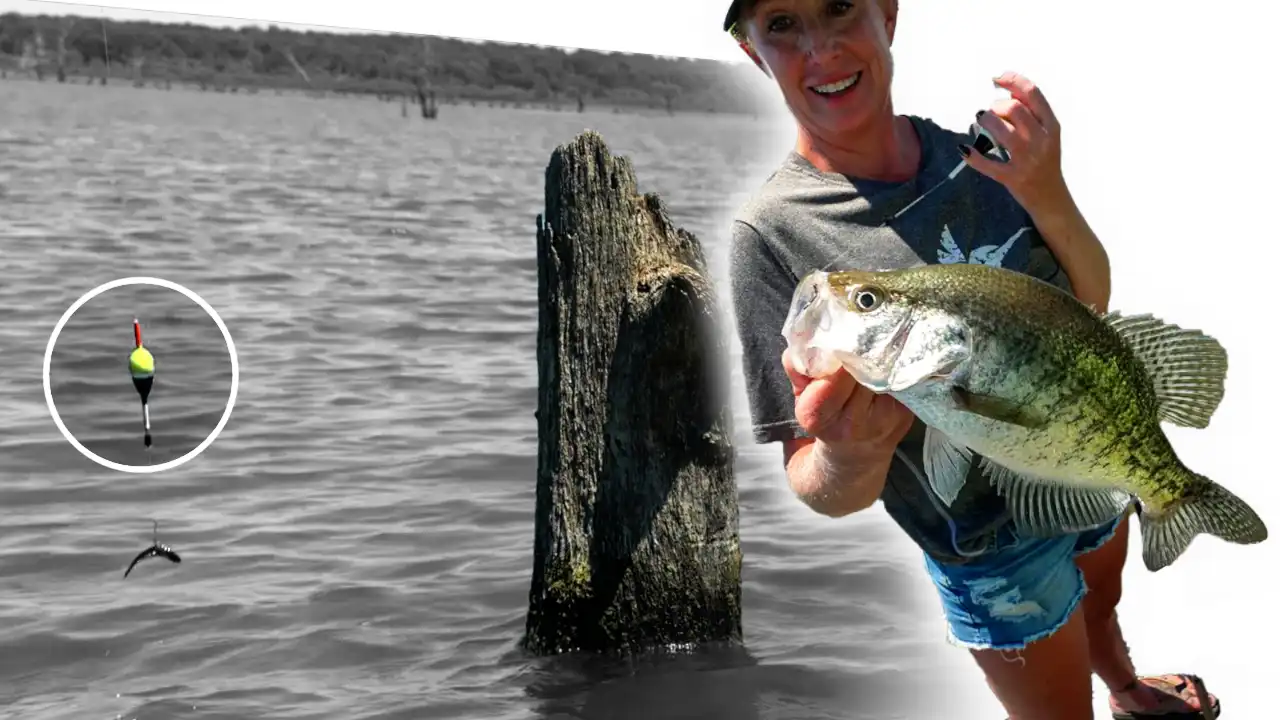Join expert crappie anglers Holly and Jack Linton in this informative guide to bobber fishing for crappies. Bobber fishing, often called float fishing, has long been an excellent way to catch crappies and bluegills. The Lintons provide a step-by-step breakdown of how to tie a slip bobber for crappie fishing – a method that presents bait at a precise depth. Leveraging live sonar, they demonstrate how to determine the depth of the fish and where to set their bobber stop accordingly.
In this tutorial, viewers will learn:
- How a bobber can outperform other popular crappie tactics such as jigs, with an emphasis on the vertical presentation.
- The versatility of slip bobbers (aka slip floats) to present your chosen bait at any depth.
- How to tie a slip bobber and rigging tips for presenting your bait as naturally as possible.
- Insights into using forward-facing sonar (MEGA Live) to gauge the perfect depth for bait placement.
- The importance of watching the bobber instead of relying solely on electronics to ensure no missed bites.
Additionally, the Lintons delve into gear specifics. From their preference for small casting reels to using a 15-pound braided line, they shed light on their preferred equipment. They also touch upon the versatility of the slip bobber, emphasizing its compatibility with different weights and hooks.
Toward the end of the video, Jack Linton shares how he uses Humminbird MEGA 360 Imaging to get a clear picture of the structure, cover, and bottom composition changes around the boat. In this case, he’s using 360 to locate productive-looking trees with the most branches, and also see fish. Whether new to fishing or old hat, the Lintons show that bobber fishing, when done right, can yield impressive results.
FISHING GEAR USED IN THIS VIDEO
TACKLE
- ROD – Freaky Frank’s Custom Tackle 12′ Prototype: Check out Freaky Frank’s
- REEL – Ming Yang CL25 Ice Fishing Baitcast Reel: Buy at Amazon
- LINE – Sufix 832 Advanced Superline, 15-pound: Buy at FishUSA
- HOOK – Eagle Claw Plain Shank Hook, size 4: Buy at Bass Pro Shops
FEATURED ELECTRONICS
- FISH FINDER (bow) – Humminbird APEX 19 MEGA SI+ Fish Finder/GPS Chartplotter: Buy at Bass Pro Shops
- FISH FINDER (console) – Humminbird HELIX 12 MEGA SI+ GPS G4N: Buy at Bass Pro Shops
- LIVE SONAR – Humminbird MEGA Live Imaging: Buy at Bass Pro Shops
- 360 SONAR – 360 IMAGING – Humminbird 360 Imaging: Buy at Bass Pro Shops
- TROLLING MOTOR – Minn Kota Ultrex: Buy at Bass Pro Shops
- BOBBER (aka float) – Thill America’s Favorite Slip Float: Buy at FishUSA
- SLIP BOBBERS at FishUSA
- BOBBER STOP – VMC Sinker Stops: Buy at FishUSA
- WEIGHT – VMC Tungsten Worm Weight: Buy at FishUSA












